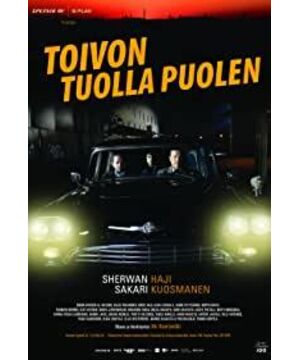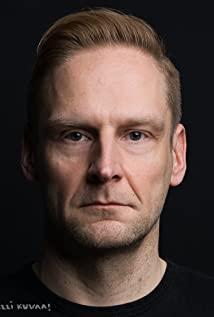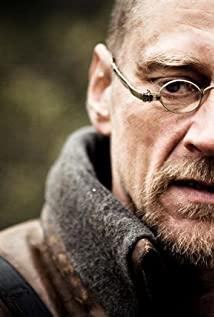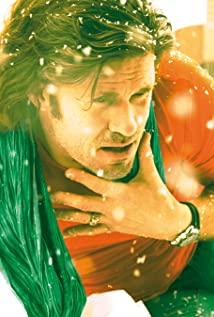There is one thing that we can only imagine now, but it is difficult to experience it in person. It is not because of how difficult it is to experience or how easy it is to imagine, but because we are in the same world, in fact, there is the isolation of the Tower of Babel. It is a huge difference in the whole life, and that incident is illegal immigration.
In Aki Kaurismaki's new film "The Other Side of Hope", we see the irony brought about by this difference, and also see the difference between Syrians from war and peaceful Finns. What a difference.
And Kaurismaki's strategy for this is: he only shows humorously and does not deliberately judge, but this attitude towards illegal immigration alone is worthy of attention, because we all want to see, in the Tower of Babel How do people react when they walk together.
Dramatic tension in strong contrast
When watching this 100-minute film, what I feel is 100 minutes of bizarre fun, not 100 minutes of European literature. Unlike many art films, The Other Side of Hope does not ignore contrasting narratives with strong dramatic tension.
To put it simply, it allows two different people from the chance encounter when they appear on the stage, to their own sad and happy encounters, and finally the reunion of the two of them, and we constantly switch on both sides with the camera's perspective, feeling the warmth and coldness. Sophistication and impermanence in an alternative humor.
In fact, the movie has always been comparing the appearance and circumstances of the refugee Khalid and the middle-aged Finn. In their first appearance, Khalid stood up in the coal pile, embarrassed, while the middle-aged man looked in the mirror, Treat your hair decently.
Shivan Haji as Khalid
The subsequent experience is that Khalid is getting more and more difficult. Not only can he not find his lost sister, but he is also treated as deportation. In the end, he can only get up and run away, living on the streets, and being violently attacked by racists from time to time.
And what about middle-aged people? He sold clothes from the previous inventory, and then made a big gamble. After a big win, he bought a restaurant and played the owner of the restaurant leisurely.
Is the movie just describing the difference in two people's lives? No, it's actually talking about "immigrants", for middle-aged people, he is not "immigrants", but he is "immigrants", and for Khalid, he is both.
In other words, "immigration" is the subject of "The Other Side of Hope", but it is not the subject. Kaurismaki is interested in dabbling in this subject, after all, this is the current focus of Europe, and thousands of immigrants from the Middle East and Africa With the influx to Europe, the social problems caused by it should not be underestimated, and the human nature problems caused by it are even more worth pondering.
However, Kaurismaki has no intention of staying on this subject. You must know that it is not uncommon for movies to be brilliant by gnawing on the subject, and relying on the topic to attract people, so as to achieve political correctness, regardless of the basic narrative method of the film, let the film The depth of the book is greatly reduced, and "The Other Side of Hope" is just the opposite. It tells the story of "illegal immigrants", but it also digs into the topic of "immigration", which is why the film was nominated for the Golden Bear Award and finally won the Silver Bear Award.
The so-called "immigration" is actually to leave the original life and continue to survive and live in another circle. For Khalid, it is survival; for middle-aged Finns, it is life.
However, the status of "immigrants" often determines the fate of "immigrants". Khalid only has a talent for music, and in a strange country, he can only do chores in the kitchen in the end;
And the middle-aged Finn, after divorcing his alcoholic wife, abandoned his previous stable career as a clothing dealer, and then let go of it, dared to gamble, and finally won a lot of money. This is the destiny of the roulette wheel.
Kaurismaki here does not want to defend immigrants or fight for their rights. That is the job of politicians. For film directors, what is needed is reflection.
So we see violent attacks, we see the reassurance of neo-Nazis, and the most conservative nationalists will eventually evolve into racists. Contrary to the theory of cultural researchers, this is what Archie is telling us with video.
Alternative humor? smear tragedy into comedy
Such a heavy "immigration" topic, Kaurismaki did not handle it like Ken Lodge, so it is destined that "The Other Side of Hope" is not "I Am Black", although both are left in the ideological field, but Ken Lodge was screaming silently, and Kaurismaki was only willing to sneer.
I'm Blake I, Daniel Blake (2016)
Kaurismaki's offbeat humour is everywhere, and the first thing that strikes me is the scene where Khalid and a middle-aged Finnish man meet for the first time. One standing, one in the car; one covered in charcoal, one in a straight suit, and here Archie offers us his signature style of comedy—static scenes rather than lines and drama.
For example, in this film, Khalid and two other immigrants are sitting on stools and waiting. Here, the film gives a straight shot of a medium and close-up shot, followed by a close-up shot of the clock, followed by Khalid. The person is sitting on the stool, and the frame is the same as the first shot.
This is Archie's humor, the characters are like objects, the expressions are blank, and the result of time jumping is that the number of people is reduced. Here, there is no line prompt, because it is unnecessary; there is no action instruction, because it is too complicated, in Archie's In the language of images, what is needed is simplicity.
Here, he understood the essence of the French director Robert Bresson's images, 1: the actors perform at zero degrees; 2: the scenes are extremely simplified.
Under this strategy, what Kaurismaki asks from the audience is no longer emotions, but thoughts. Tragic scenes are not without them, such as the grief of Khalid and his fellow Middle East villagers at the shelter at night, such as Khalid being killed three times to violent attacks by racists.
But Aki still handled it very lightly. He didn't want the tragic emotions to influence the judgment of the audience. In order to "disturb" the emotions, he even used comedy to deal with these tragic atmospheres. For example, the immigrant in the shelter is represented by the grouping of wooden expressions; the violent scenes are handled with rigid and deliberate attacks.
To a certain extent, "The Other Side of Hope", like Wes Anderson's "The Grand Budapest Hotel", is a "beautiful" humorous work, with exquisite lighting, good composition, and clever editing. Let this kind of work always exude an alternative touch, which makes people unable to touch, but cannot escape the world it shapes.
Most importantly, they often wrap a bitter story in sugar coating, so the audience eats it and can't forget it.
The Grand Budapest Hotel (2014)
Back to the story of the Tower of Babel! After "immigrating", can different people really bypass the Tower of Babel and find a common language and way of getting along? The middle-aged Finnish man finally helped Khalid find his sister, and may be able to close the case.
However, in the end, Khalid could not escape the attack of racial elements, and his sister went the same way again, trying to settle down in Finland "dignifiedly", or let the case become an unsolved unsolved case, and this time, Kaurismaki did not didn't give us an answer.
This article first published "curtain flavor"
Please send a private message to make an appointment or reprint!
View more about The Other Side of Hope reviews










